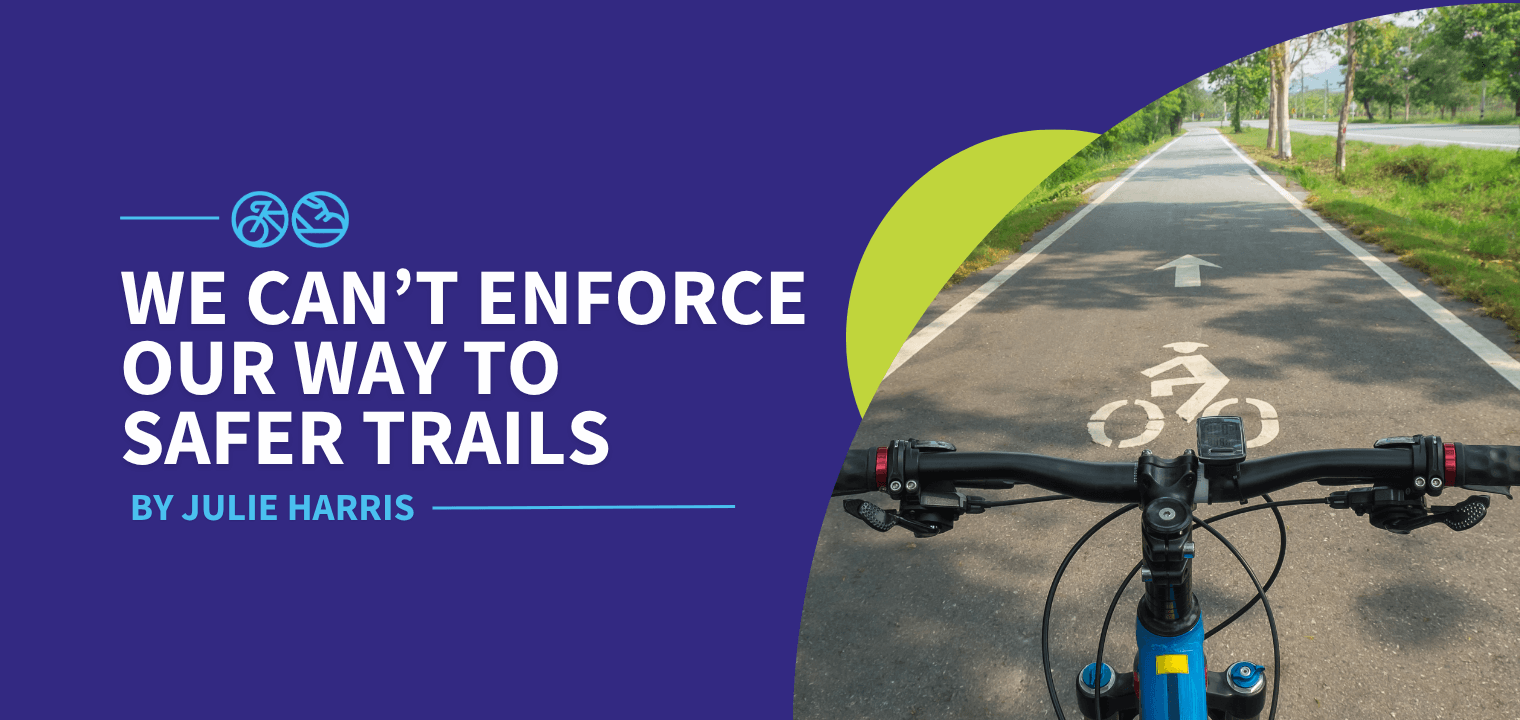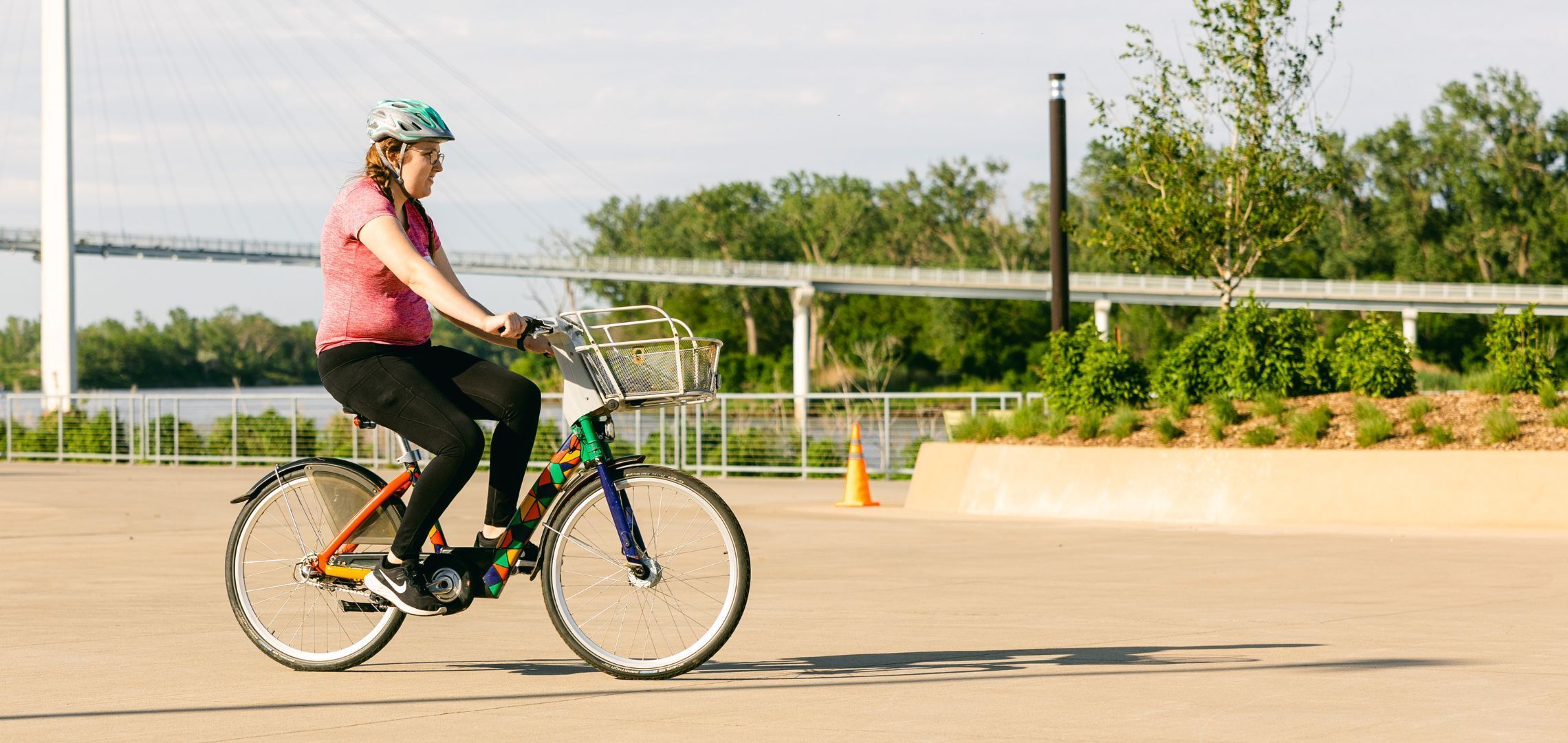
We hear you, loud and clear (as do my colleagues around the country): our trails are more complicated with the presence of e-motos and other devices that look like e-bicycles but are, in fact, not actually bicycles.
Speed and safety are common themes in complaints about these devices, and with good reason. If you are on a trail for a leisurely stroll, taking a dog for a walk, or perhaps out with a child who is just getting started on learning their bike riding skills, it can be nerve-wracking, and sometimes downright dangerous, to have someone speed past you. Dogs and kids can often be unpredictable, adding to the safety concerns when sharing trail space with fast-moving devices.
The Root of the Issue
However, what we’re currently facing isn’t as new of an issue as many think.
Many years ago, I led bike rides in Omaha for Girl’s Inc. kids. Riding on a trail with a group of 10-15 kids with limited bike handling experience can be challenging (especially when there is so much to look at other than the trail and the person in front of you!). We regularly practiced the group riding techniques of riding single file and relaying messages from the leader back through the pack; any time “rider up!” echoed behind me, it made me smile.
One summer morning, our group was rolling along nicely when I heard distressed sounds from the girls behind. About that same time, a rider in full Lycra on a carbon road bike with aero bars blew past and cursed at me about “getting those $%$^% kids under control.”
Rude, disrespectful behavior and unsafe speeds can just as easily be experienced from someone riding a bicycle powered only by quads of steel and under the influence of Strava, as someone on an electric-powered device.
E-bikes and e-motos are not the real problem here - they’re simply the latest scapegoat.
Enforcement Isn't the Solution
Many are calling for law enforcement presence on our trails, but here's the thing: we are not going to enforce our way out of these safety challenges. We could adopt speed limits, but how would they actually be enforced? Does the 911 system have the capacity to add rude bicyclist reports to its call volume? Does law enforcement have the capacity to have officers on bikes (or motorcycles or helicopters) patrolling every trail in our cities? Most of these “solutions” might make some of us feel better, but they don’t address the root of the issue.
We are not rushing to figure out whether policy change is needed to help improve safety on our trails.
The market for e-devices is significantly outpacing the policy at this point, creating a sense of urgency, but sound policy needs to be thoughtfully considered for it to be effective.
The last thing we want to do is support a rush judgment that could inadvertently lump standard e-bikes (defined by the 3-tier classification system we passed in 2023) into the same category as e-motos (devices that are either battery- or gas-powered, without operating pedals, or otherwise do not require human power to function). The legal implications of this mistake could create significant barriers to using classified e-bikes, especially for those who use a bicycle for transportation. This is the opposite of our mission.
How to Move Forward, For Now
There is perhaps no hotter topic in the bike/ped advocacy world right now than what to do about e-motos.
Bike Walk Nebraska is monitoring other state advocacy groups currently working on legislation. We will be working with our partners to find a policy solution, as needed, to maximize safety for all users while preserving the rights of people to get from point A to point B without a car.
In the meantime, please keep practicing and preaching good trail etiquette and model it for others. You may have to find a deeper well of patience and grace for those you encounter on the trail who may not share your etiquette. Education far outweighs enforcement when it comes to the efficacy of change.

